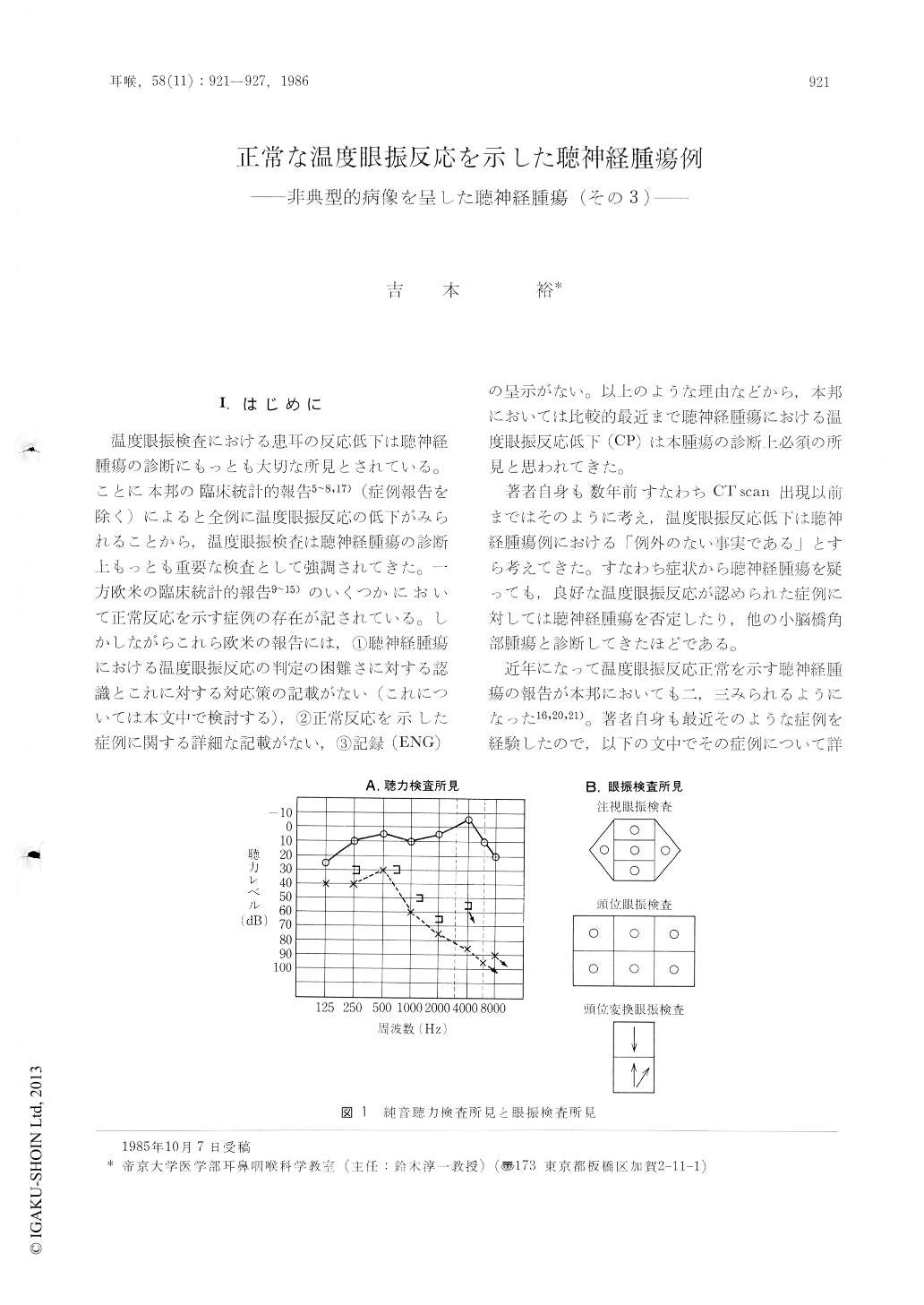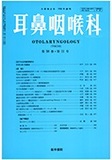- 有料閲覧
- 文献概要
- 1ページ目
I.はじめに
温度眼振検査における患耳の反応低下は聴神経腫瘍の診断にもっとも大切な所見とされている。ことに本邦の臨床統計的報告5〜8,17)(症例報告を除く)によると全例に温度眼振反応の低下がみられることから,温度限振検査は聴神経腫瘍の診断上もっとも重要な検査として強調されてきた。一方欧米の臨床統計的報告9〜15)のいくつかにおいて正常反応を示す症例の存在が記されている。しかしながらこれら欧米の報告には,①聴神経腫瘍における温度眼振反応の判定の困難さに対する認識とこれに対する対応策の記載がない(これについては本文中で検討する),②正常反応を示した症例に関する詳細な記載がない,③記録(ENG)の呈示がない。以上のような理由などから,本邦においては比較的最近まで聴神経腫瘍における温度眼振反応低下(CP)は本腫瘍の診断上必須の所見と思われてきた。
著者自身も数年前すなわちCT scan出現以前まではそのように考え,温度眼振反応低下は聴神経腫瘍例における「例外のない事実である」とすら考えてきた。すなわち症状から聴神経腫瘍を疑っても,良好な温度眼振反応が認められた症例に対しては聴神経腫瘍を否定したり,他の小脳橋角部腫瘍と診断してきたほどである。
A case of acoustic tumor showing a normal reaction to the caloric nystagmus test is described.
On examination of acoustic tumor patients presenting with spontaneous nystagmus, it is necessary to distinguish the true caloric nystagmus from the enhanced spontaneous nystagmus. This distinction can be made by determining whether or not the direction of caloric nystagmus is reversed when the patient changes his head position from the ordinary position to the slouching position in sitting. In the case under discussion it was confirmed by this technique that the direction of caloric nystagmus was reversed.
This case was found to have a cystic acoustic tumor originating in the inferior vestibular nerve.

Copyright © 1986, Igaku-Shoin Ltd. All rights reserved.


